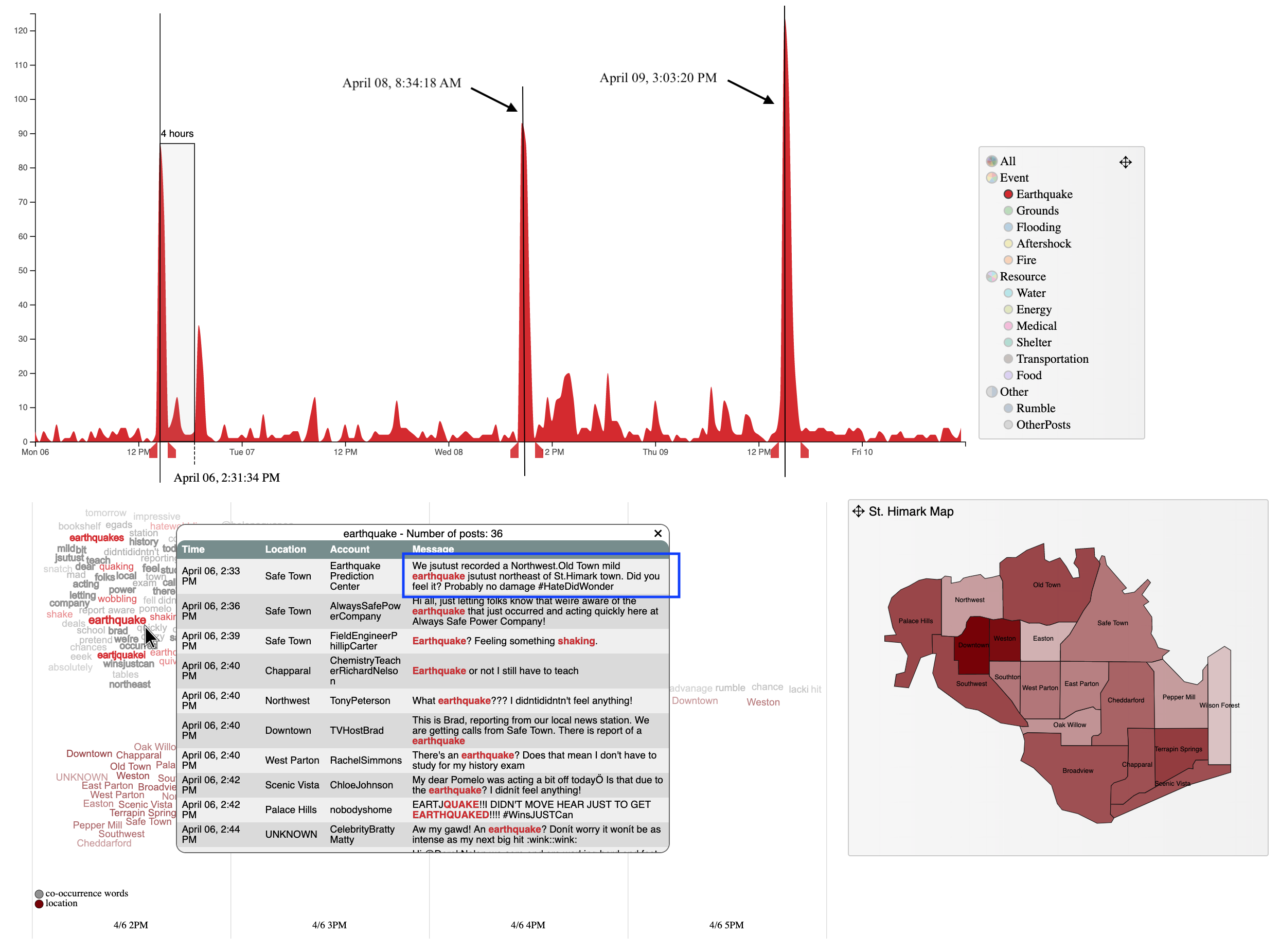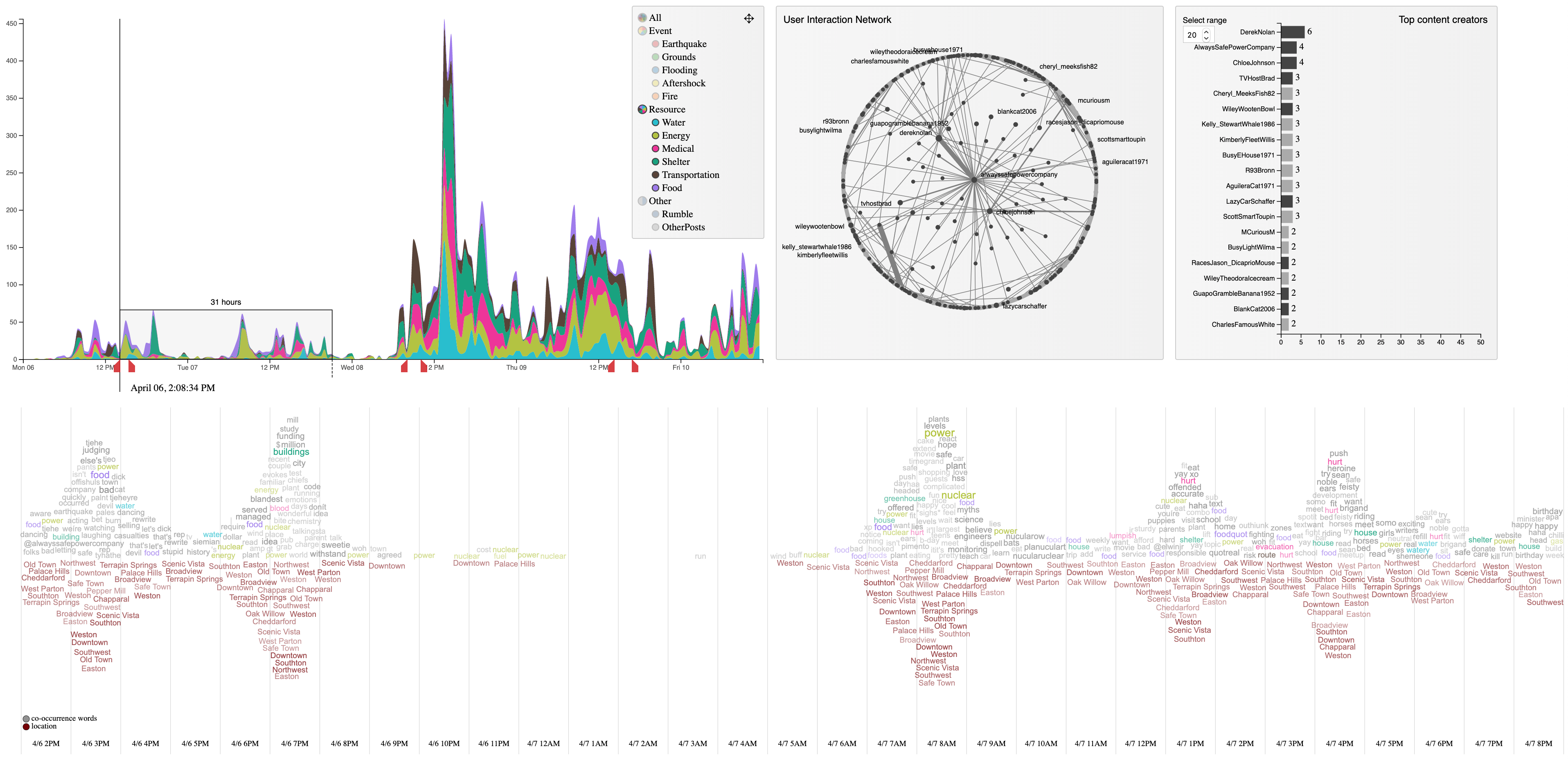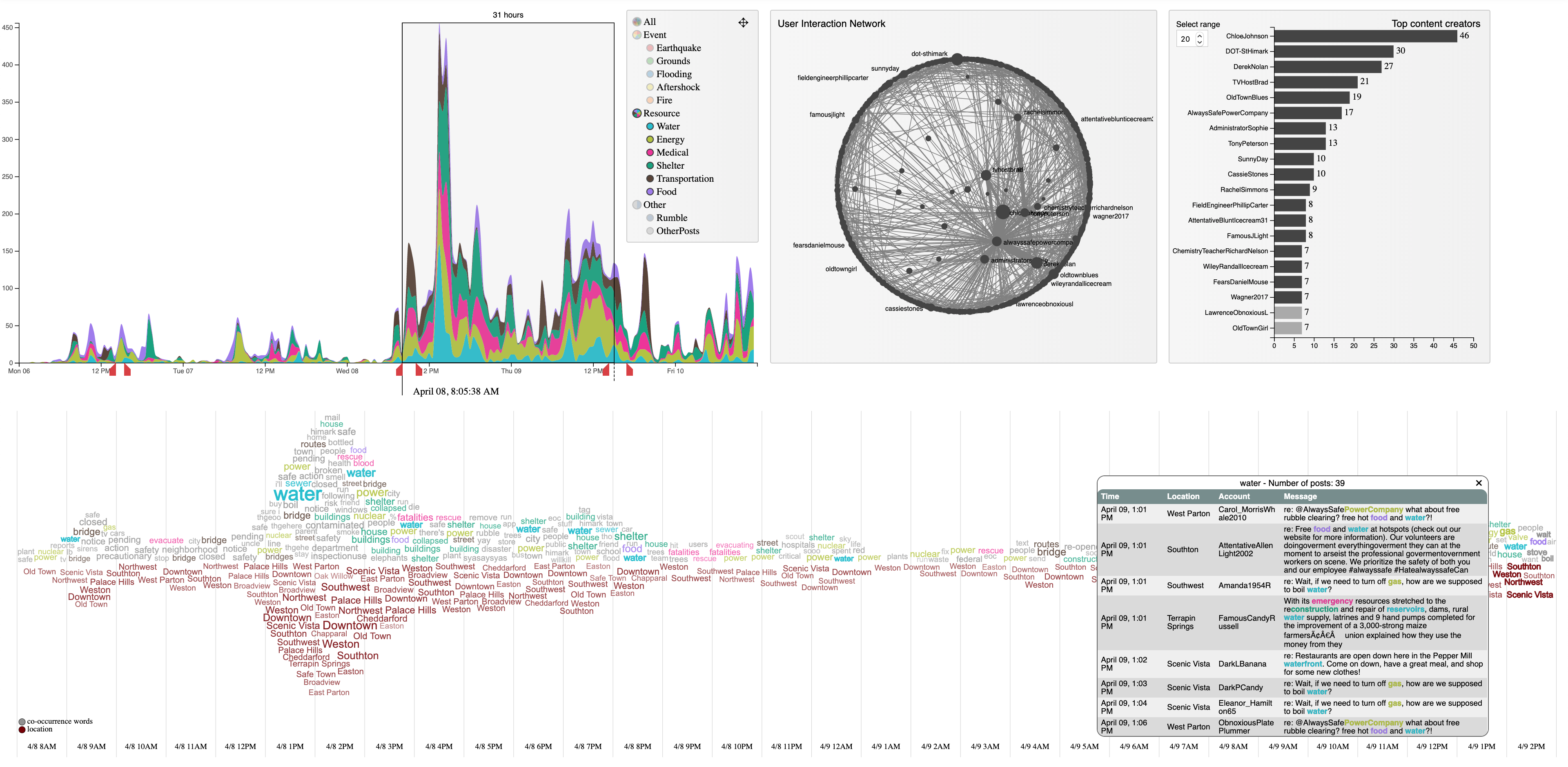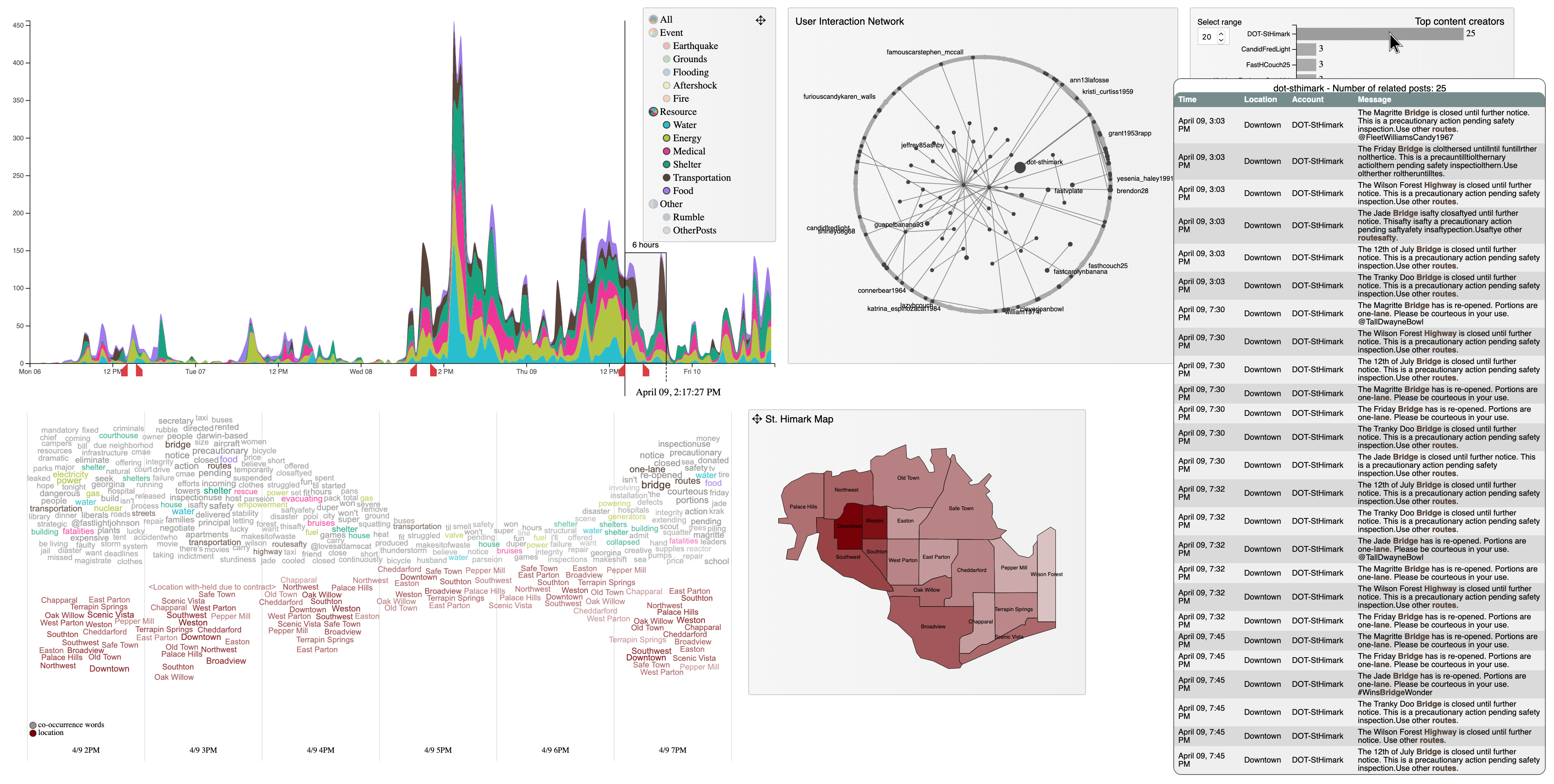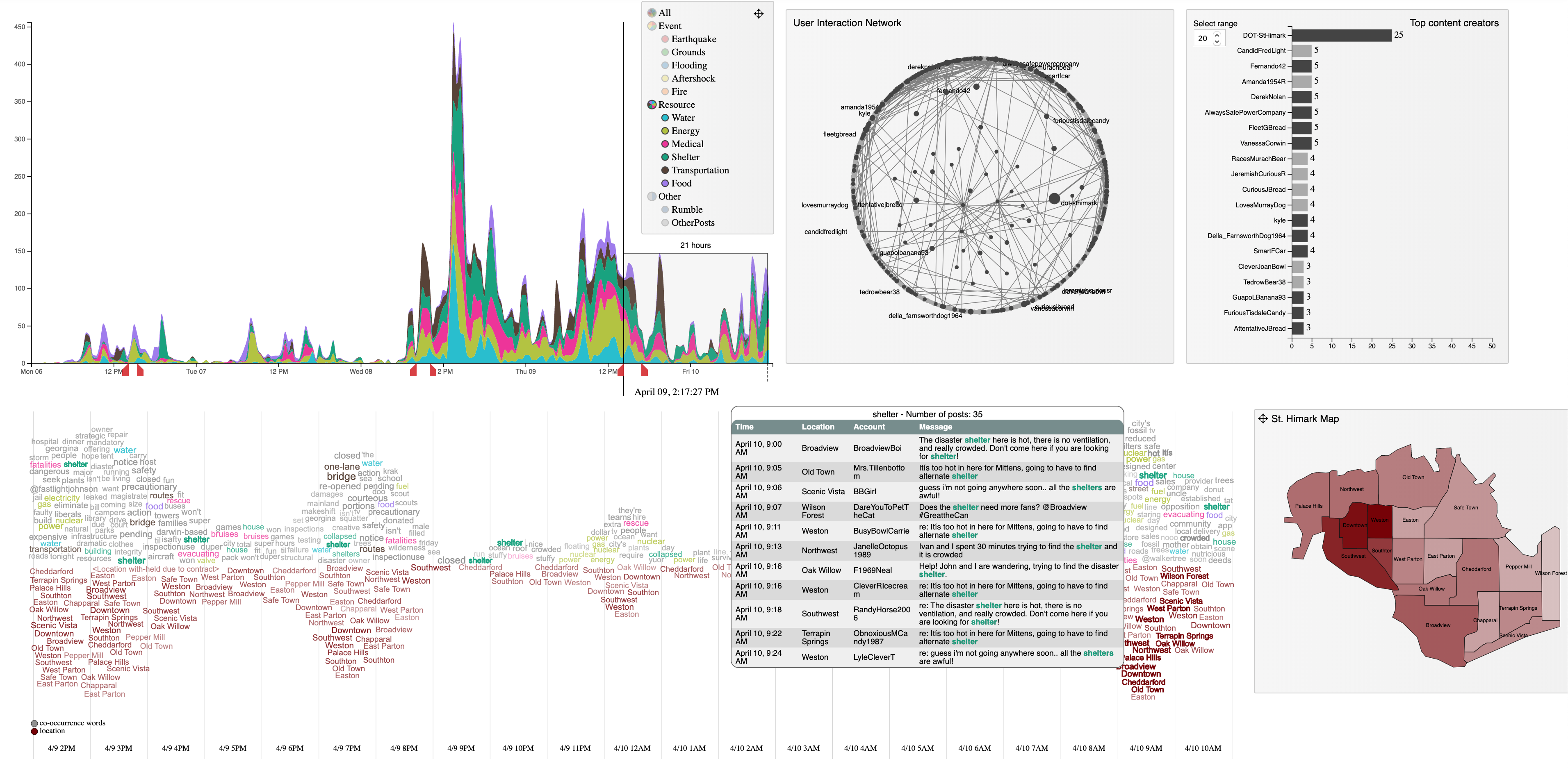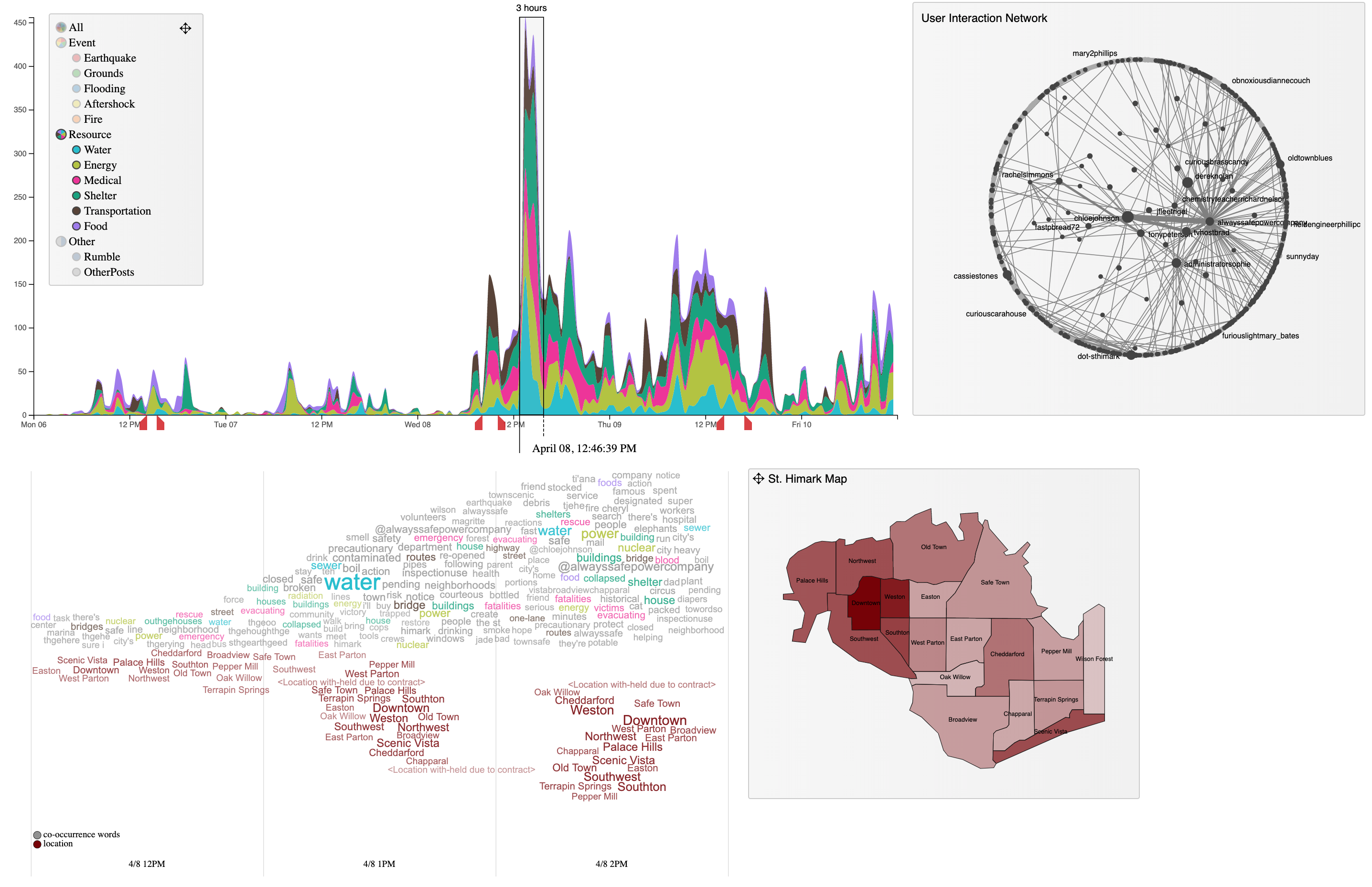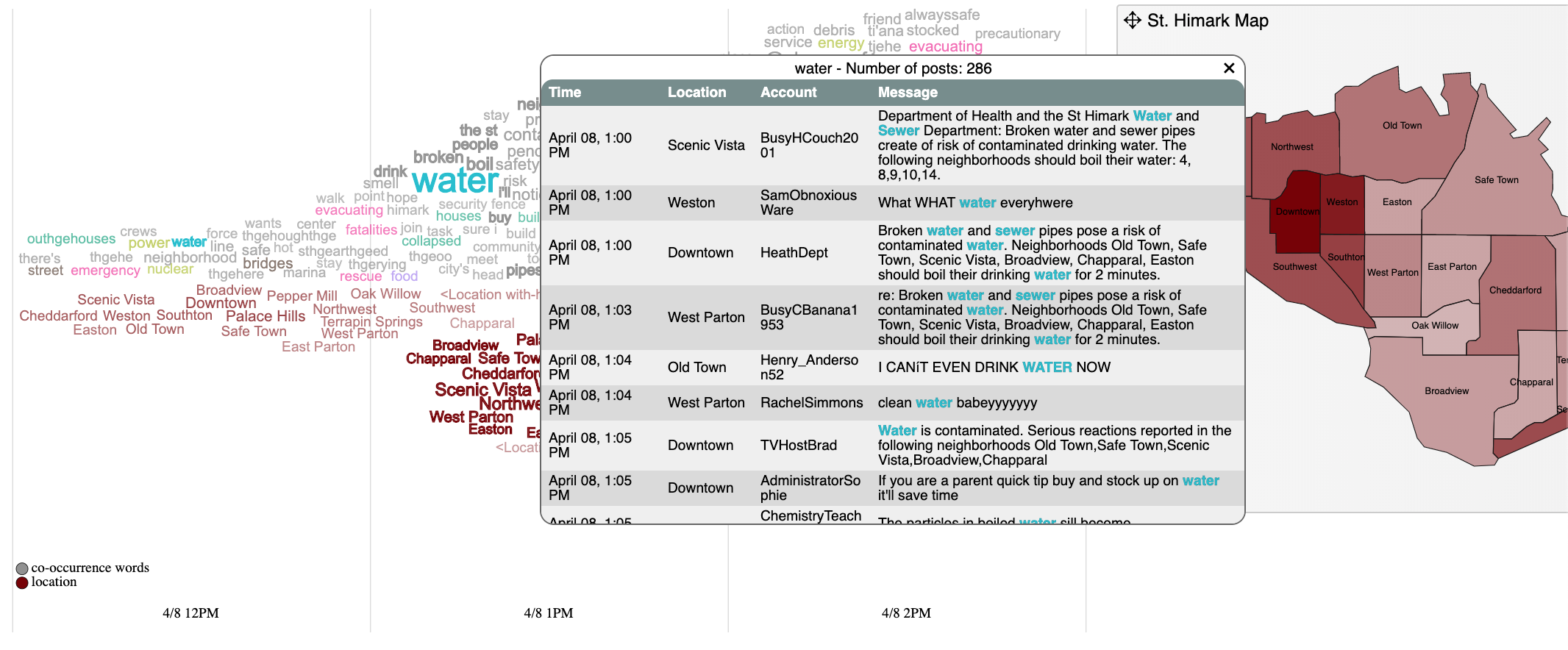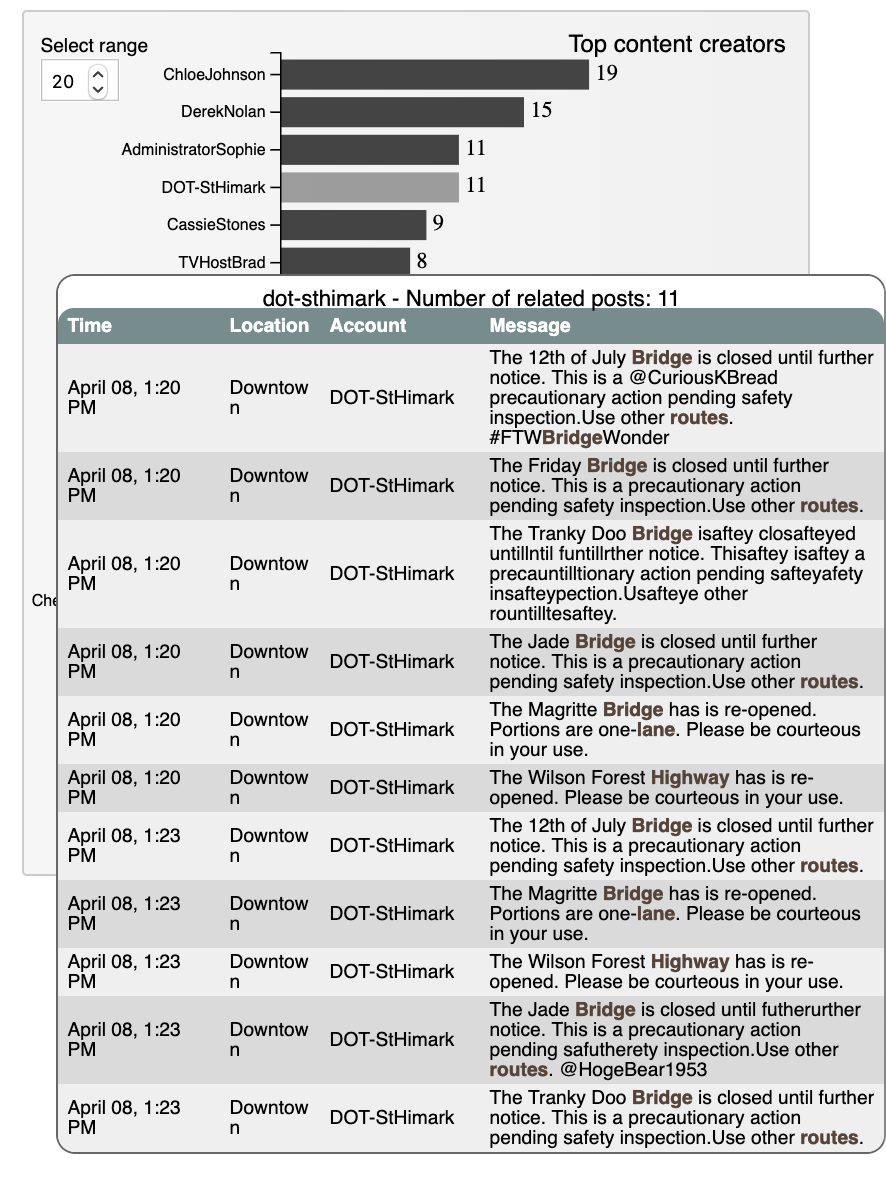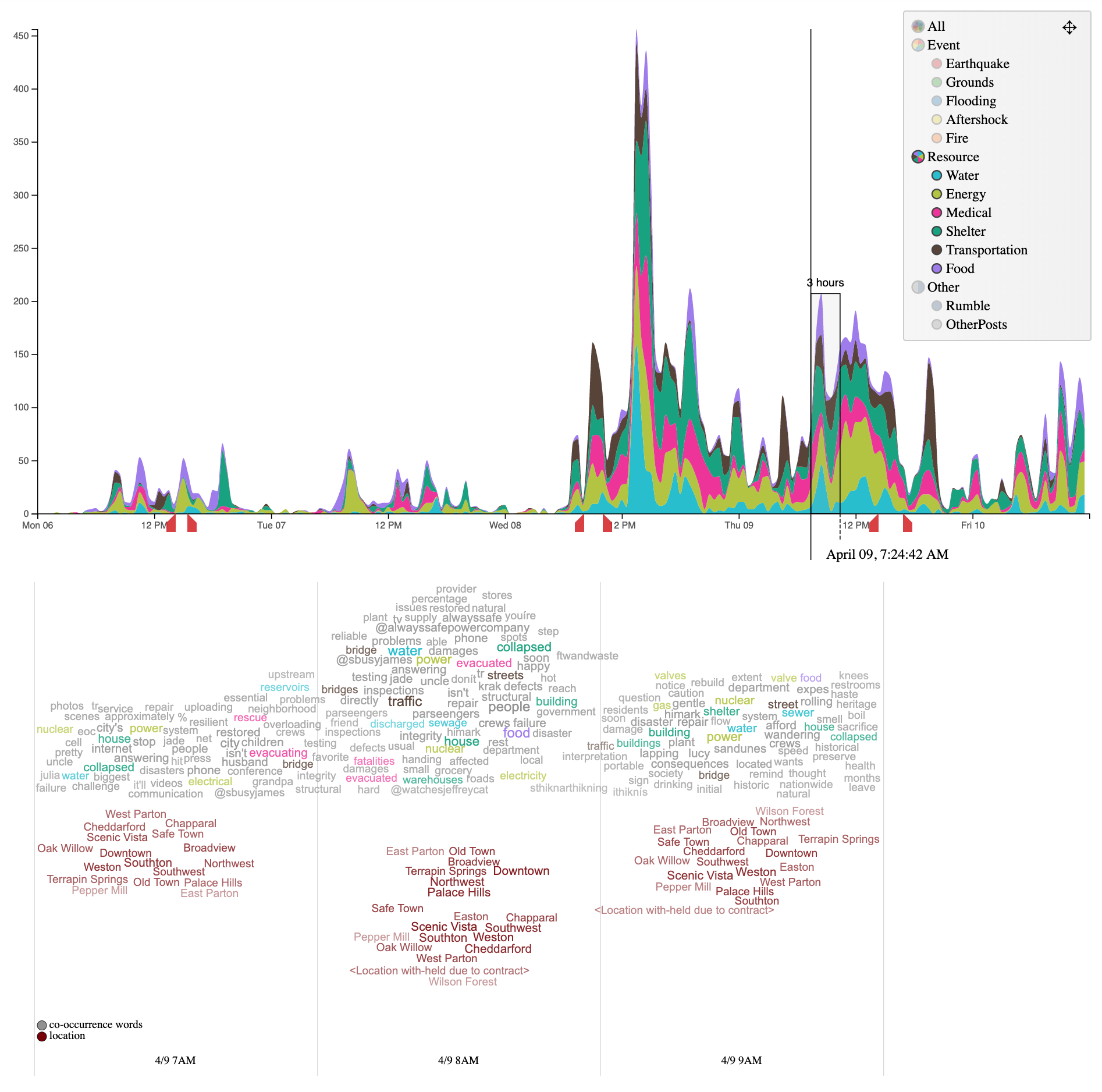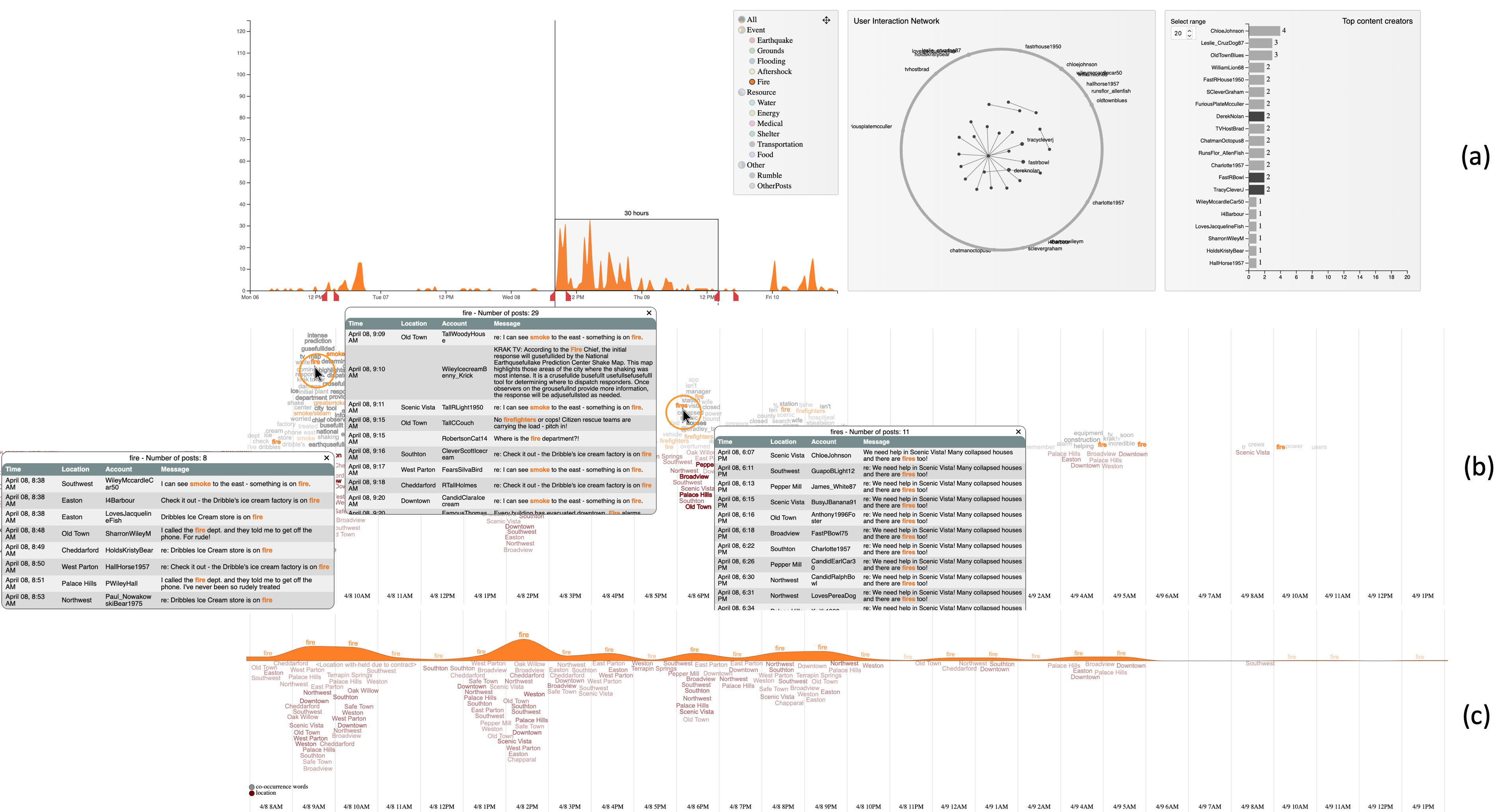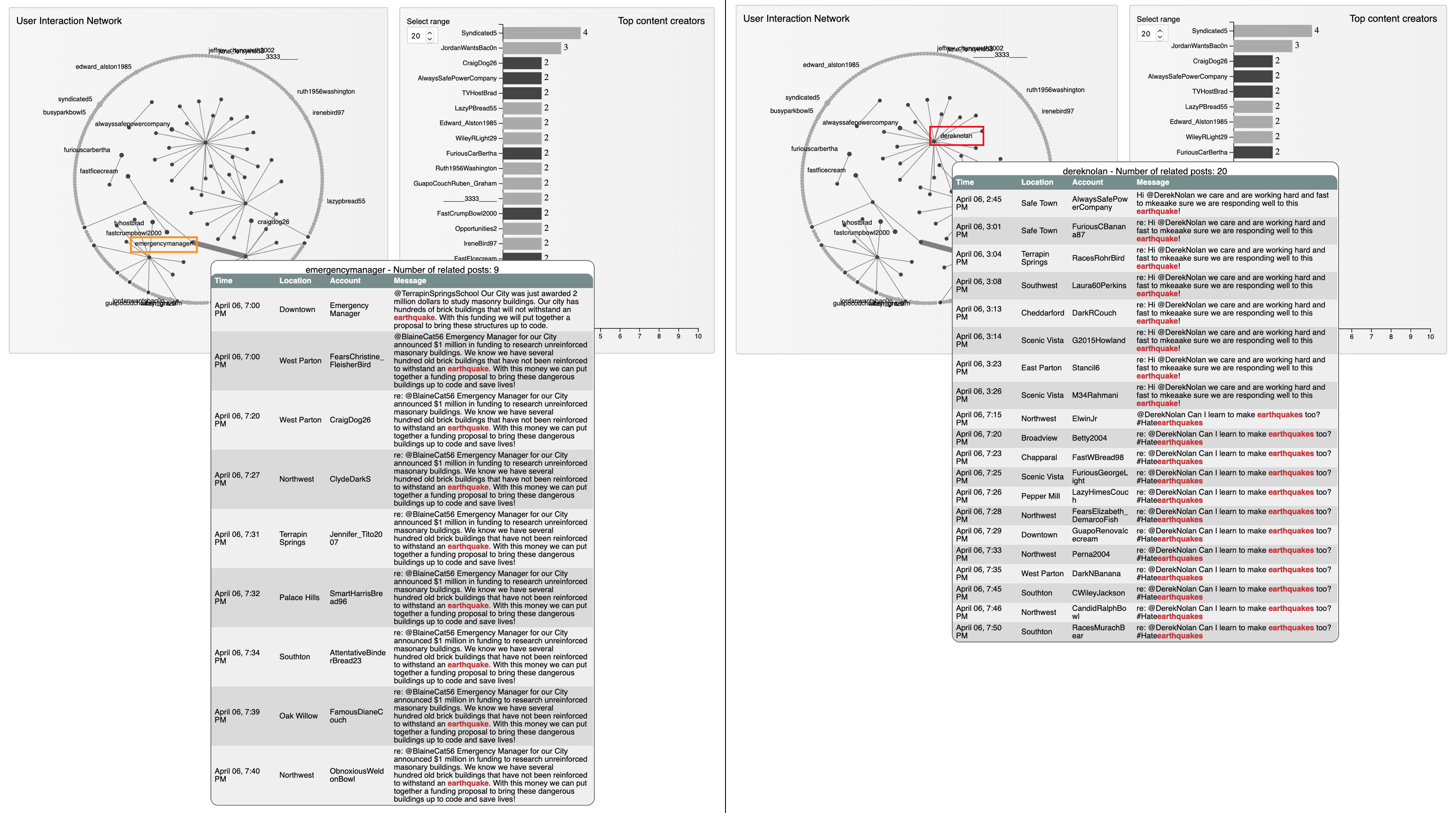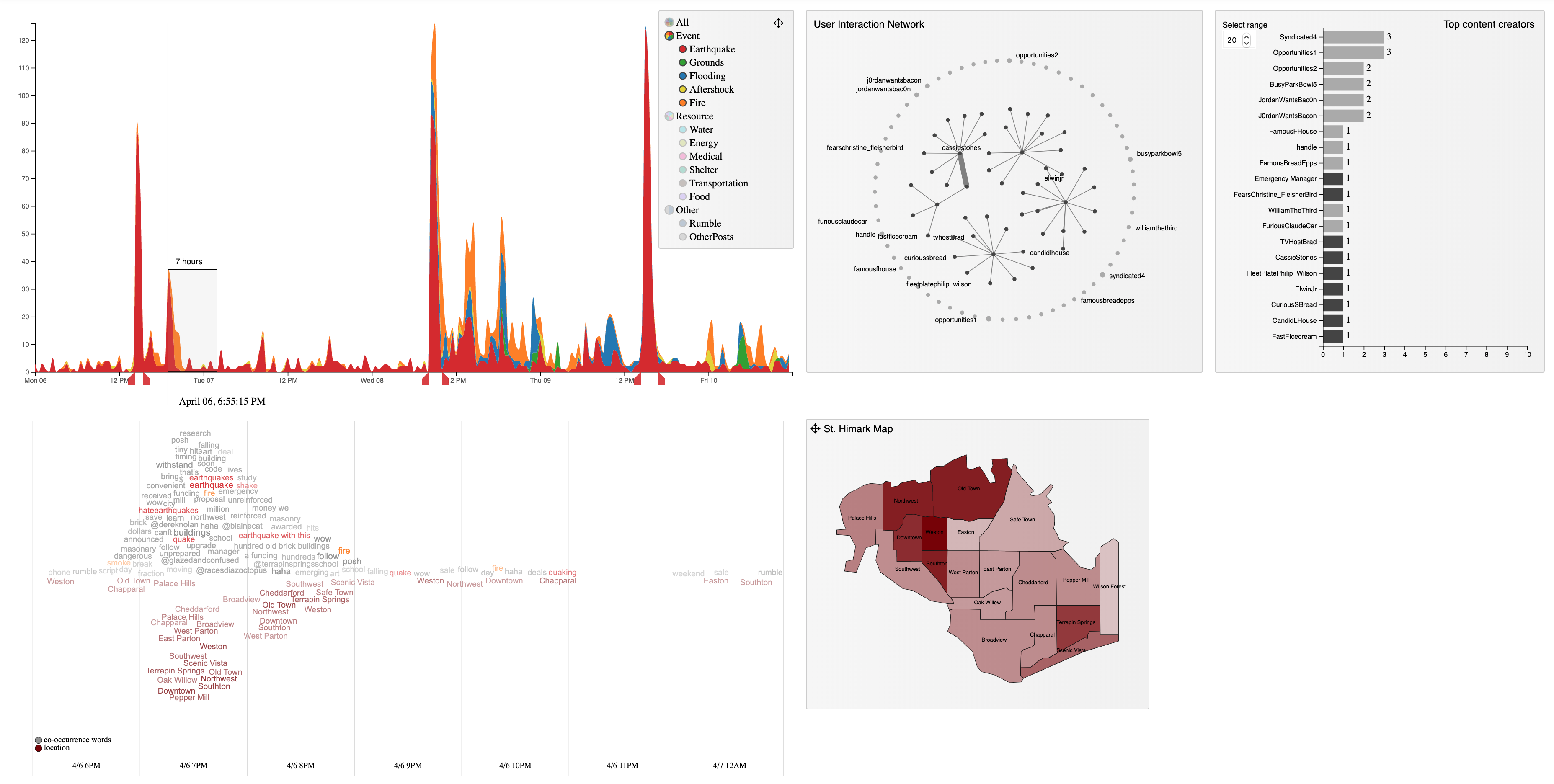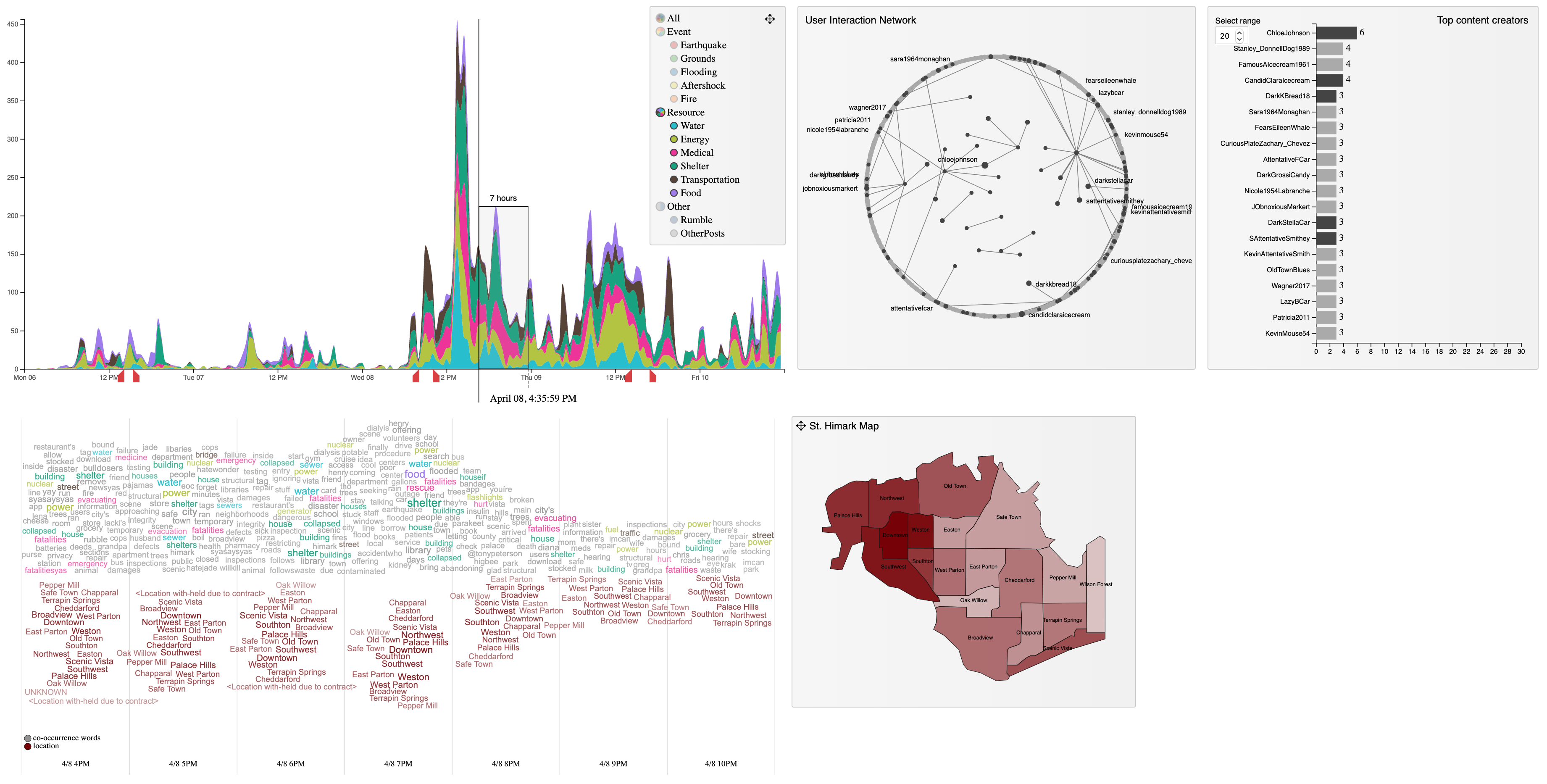

VAST Challenge 2019
Mini-Challenge 3
Team Members:
Huyen Nguyen, IDV Lab, Texas Tech University, huyen.nguyen@ttu.edu PRIMARYTommy Dang, IDV Lab, Texas Tech University, tommy.dang@ttu.edu
Student Team: YES
Tools Used:
HTML, CSS, JavaScriptD3.js
GitHub: https://idatavisualizationlab.github.io/VAST2019mc3/
Approximately how many hours were spent working on this submission in total?
320 hours.May we post your submission in the Visual Analytics Benchmark Repository after VAST Challenge 2019 is complete? YES
Video
https://idatavisualizationlab.github.io/VAST2019mc3/video.htmlSystem Overview
The analytics application includes active, interactive components that are able to work with dynamic, streaming data. The main control board (A) is built as a stream graph. Each stream represents the number of posts classified as the selected categories from selection panel (A1). Each of these categories come with a set of keywords to decide if a message belongs to a category or not. A sliding window across the stream graph is provided for specific selection of time frame at a particular timestamp, with expandable window width. This time frame can be expanded from 1 hour to 31 hours by user. The vertical axis shows the number of posts, while the horizontal axis shows the timeline.The other four components are depicted as panels B to E in System Overview Figure. For each change in main panel A – whether it is choosing another time frame, timestamp or category selection, all other 4 panels are updated according to A.
To demonstrate the evolution of a topic, panel B provides a WordStream, showcasing the content of corresponding messages for the chosen time frame and the chosen categories. The WordStream consists of two topics: the keywords within content of messages and location of the message. Thickness of the stream is proportional to number of posts – the global trend. Users can also explore the local trend of an individual term and detail of messages.
Panel C is a map of St. Himark, in which the color of each neighborhood indicates the number of posts for the chosen time frame and the chosen categories. User can use this map for highlighting corresponding terms in the WordStream and vice versa.
Panel D is a network of user interaction for the chosen time frame and the chosen categories. The network demonstrates the connection between users, through the account mentioning in content of messages. Via this network, we can spot which one is the account that has important role in the community.
Panel E is an account list for ranking content creators. This chart shows the accounts the write the largest number of posts for the chosen time frame and the chosen categories. From this chart, users can see who write many posts but not connected to the community, exploring these points can help to detect irrelevant accounts.

System Overview
